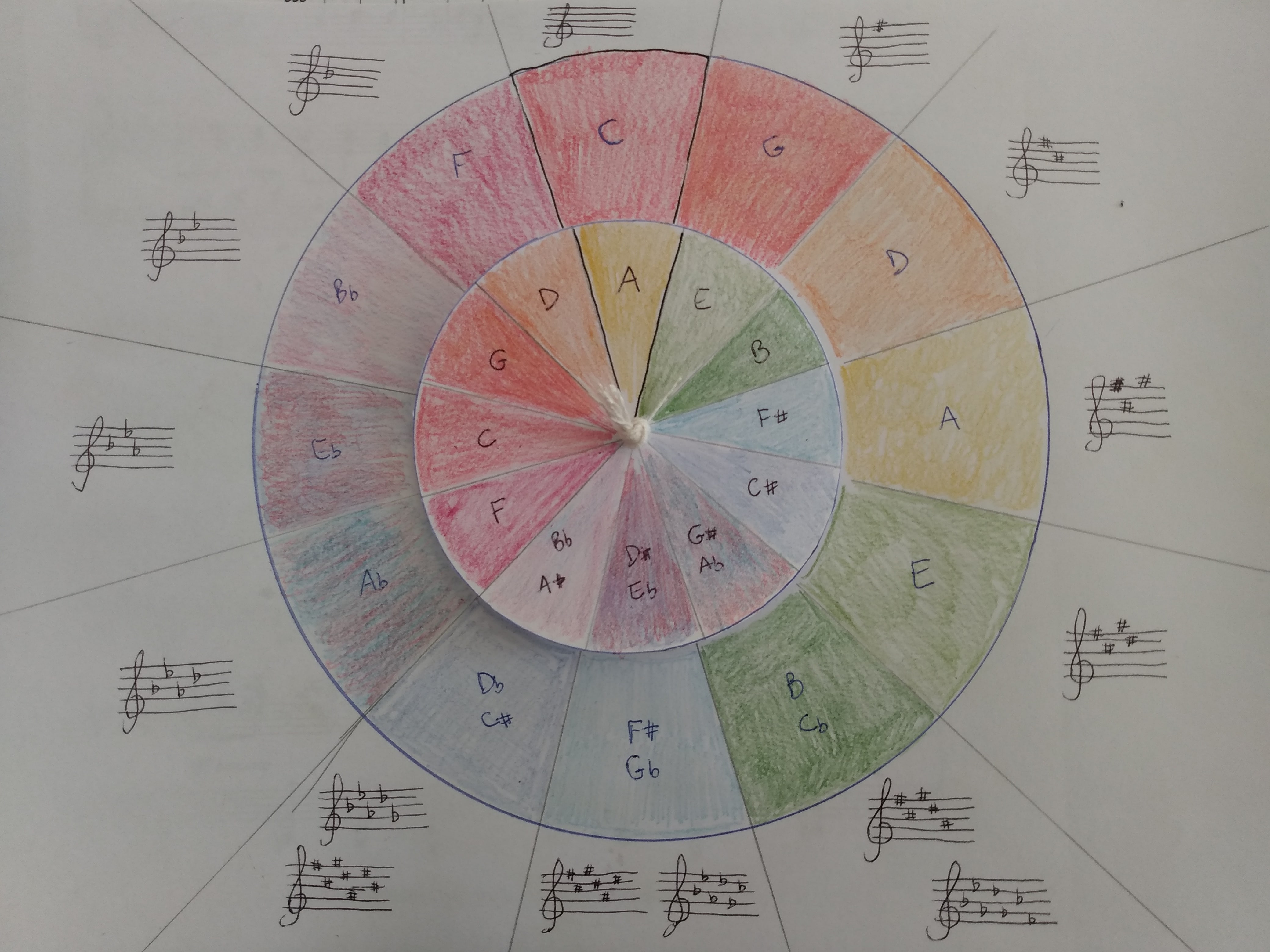
Last Sunday I decided to start (re)learning some music theory by myself. The objective was to learn the scales and the entrypoint for that was the circle of fiths. I don’t know why, but I felt the need to hold the circle of fiths chart I was consulting in my own hands. So instead of printing it I made my own, and while I was at it I thought it would be cool if the inner circle could spin, so I made it likewise. Here’s the outcome:
 Handmade circle of fiths chart
Handmade circle of fiths chart
The phisicality of it made me eager to play with this tool. Soon, I started gaining insights that might be obvious for a seasoned musician or someone who is proficient in theory. Nonetheless, here are some findings that I found amusing.
1.Notes Interwined
Notice how by starting at F, it is possible to spot the following sequence: F_G_A_B. The underscores just mean that a note is skipped. The interesting part is that you can fill the gaps with another sequence: C_D_E, yielding the full sequence FCGDAEB. So 7/12 notes of the circle are easily spotted as the white notes on the piano. But what about the other 5/12?
2.Accidental Simmetry
Well, if you pay close attention between F and B counterclockwise all notes have accidentals. Consider the sequence GDAEB, which are the notes of the circle clockwise after C. Now repeat them with a flat and you have found the remaining 5/12 notes from the circle!
3.Identifying key from Key Signature
3.1.Sharps
Add a semitone to the last sharp, or roughly add a note to it. For instance, what is the major key for a key signature with a single sharp (F#)? F+1=G.
3.2.Flats
Drop the last flat. It does not work with the major key signature with only one flat, which is F. For instance Bb major has two flats: B and E. Drop the Eb (last flat in the signature) and you will have Bb itself.
4.Sharps and Flats Relationship
Being a circle one could wonder whereas sharps and flats are interconnected. If we take a closer look at the sharps and flats sequences:
- Sharps: FCGDAEB
- Flats: BEADGCF
If you read the sharps backwards you get the flats! Also, the sharps are just the sequence of the circle of the fiths ranging from F to B clockwise. Just refer to the image and it is easy to verify. If you go counterclockwise from B to F you get the flats.
5.From Major to Minor and Vice-Versa
The major and minor scales can be obtained through the following interval composition:
- Major: TTSTT(TS)
- Minor: (TS)TTSTT
Here T stands for tone and S for semi-tone. The funny thing is, if you remove the last two intervals of a major scale (TS) and transfer it to the beginning of the remaining intervals (TTSTT) you get the minor scale formulation. This realization is even cooler in the circle itself:
 Spun inner circle
Spun inner circle
Here if you spin the inner circle by 1,5 tones (3 notes) you arrive at the same configuration as the major scale. So to obtain the relative minor to a major scale remove 1,5 tones from it. To derive the major from the minor add 1,5 tones. Example: What is the relative minor for D major? B minor. Try to see it on a piano, it is way easier. Another example the other way: What is the relative major scale to C# minor? E major.
Hey, be the first who comment this article.




